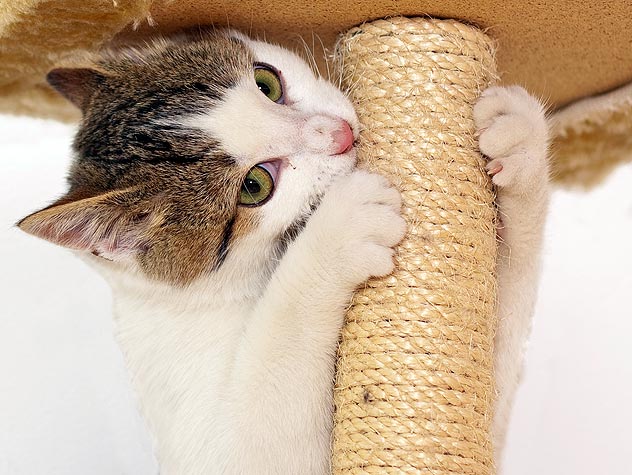Mastering Feline Aggression: Strategies for Handling Aggressive Behavior in Cats

Is your furry friend showing a bit of ‘tude? Is your cat’s playful pounce turning into a full-on attack? No worries – we’ve got you covered! In this post, we’ll share some amusing yet effective strategies for handling your feisty feline’s aggressive behavior. Get ready to decipher your cat’s cattitude and restore peace to your home!
When dealing with an aggressive cat, it’s crucial to uncover the underlying cause of their behavior. Whether your cat is constantly attacking people or instilling fear in others, understanding the root of their behavior is key. Cats may become aggressive due to various reasons such as fear, stress, or even medical issues. By observing their body language and surroundings, you can begin to unravel the mystery behind their aggressive tendencies. Remember, each cat is unique, so what triggers one cat may not affect another in the same way.
To effectively address your cat’s aggression, it’s important to determine why they are behaving this way towards people. Once you’ve identified the underlying cause, you can take steps to help your furry friend feel more relaxed and less inclined to lash out. So, the next time your cat acts out, take a moment to assess the situation. Remember, understanding the root cause of the issue is the first step towards creating a harmonious environment for both you and your feisty feline friend.
To tackle your cat’s aggression, providing sufficient mental and physical stimulation is crucial. Cats are natural hunters, so offering interactive toys that mimic prey can help fulfill their instinctual needs. Regular play sessions can keep them mentally sharp and physically active. Consider rotating toys to prevent boredom and encourage their hunting skills by hiding treats around the house. A tired cat is a happy cat, so engage them in play to reduce aggression triggered by pent-up energy. By stimulating your cat’s mind and body, you can promote a more harmonious relationship between you and your pet.
In addition to playtime, enriching your cat’s environment is essential. Provide scratching posts, cat trees, and cozy hiding spots to offer mental and physical outlets for your furry friend. Interactive feeder toys can also keep them mentally stimulated during meal times. By creating a stimulating environment, you’re giving your cat opportunities to stay active and engaged, reducing the likelihood of aggressive behavior. Remember, a happy cat is a well-stimulated cat, so invest in their mental and physical well-being to foster a peaceful coexistence in your home.
When dealing with an aggressive feline, implementing positive reinforcement training can be highly effective. This involves rewarding good behavior to encourage its repetition. By offering treats, praise, or playtime when your cat exhibits calm behavior, you can help them associate positive outcomes with being gentle and non-aggressive. Consistency is key when using positive reinforcement, so stay patient and persistent in rewarding your cat’s good behavior. With some patience and a handful of treats, you can curb your cat’s aggression and cultivate a happier, healthier bond with your pet.
In moments when your cat’s aggression escalates, mastering redirection techniques can be invaluable. Instead of engaging in a wrestling match, use interactive toys like feather wands or laser pointers to shift their focus onto a more appropriate target. By redirecting their energy towards these toys, you can help them release pent-up aggression in a fun and harmless way. Additionally, treats can serve as a distraction to redirect your cat’s attention during playtime. By reinforcing positive behavior and keeping your hands and feet safe, you can manage your cat’s aggression effectively.
Creating a safe environment for your cat is paramount to their well-being. Remove any potential hazards such as small objects, toxic plants, or accessible electrical cords. Secure windows with screens to prevent risky escapades, and provide vertical spaces like cat trees for climbing and perching. Establish a designated area with cozy bedding and toys where your cat can retreat for peace and quiet. A safe and comfortable environment is essential for a happy and healthy cat.
If your cat’s aggression persists, seeking professional help from a veterinarian or behaviorist is recommended. These experts can offer valuable insights into your cat’s behavior and provide guidance on how to address their aggressive tendencies. A veterinarian can rule out any underlying health issues contributing to your cat’s behavior, while a behaviorist can offer training and behavior modification techniques. With their expertise, you can create a safer and more harmonious environment for everyone involved.
Don’t let your cat’s aggression disrupt your household – take proactive steps to understand and address their behavior. By uncovering the root cause of their aggression and implementing positive reinforcement techniques, you can foster a happier, healthier relationship with your furry friend. Remember, with patience, consistency, and professional guidance, you can help your cat overcome their aggressive tendencies and create a more peaceful coexistence in your home.



